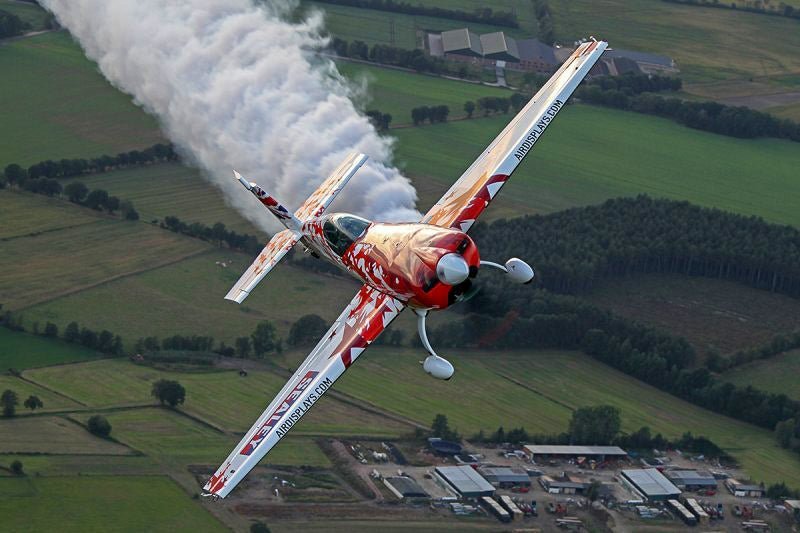A BIRD'S EYE VIEW
Bob Morcom's Interview
During a career spanning over thirty years Bob Morcom has flown everything from light Piper Aztec Twins, Boeing 737’, 757’s 767’s, and Airbus 320’s, all the way through to unique and priceless World War One fighter planes. Here is his story.


How Did You Get Into Flying?
Bob: I worked as an engineering apprentice and part time manual labourer to fund the start of my commercial flying training. Then I moved to Cabair as a flying instructor, and they subsequently sponsored me to complete the training. After flying corporate jets, and freight at night, I joined Monarch Airlines in 1987 and spent the bulk of my time there, rising to Senior Captain.
What Is the Best Part of Flying Big Jets?
Bob: It has to be the views. Thirty five thousand feet is a very good place to watch the sun rise and set. But even getting airborne on a grey winters day and flying up into the sunshine above is good! We are very fortunate to be able to look out over all the amazing landscapes of the planet from deserts to the Arctic. Watching the Aurora Borealis (Northern Lights) is a sight that always impresses!
And the Worst Part About Flying Big Jets?
Bob: In a word, exhaustion. Jet lag hits pilots just as badly as passengers, living in a continual state of jet-lag is fantastically tiring. The rules as to how much pilots should rest only really work if you have no other life and can sleep at any time of the day!

Do Things Ever Go Wrong?
Bob: No, not really. Commercial aviation is an incredibly professional environment. Pilots are exceedingly well trained. Equipment is thoroughly maintained. The risks are known, and very extensively mitigated. People are quite right to sit in the back and not worry.
There Must Have Been Some Incidents During Your Long Career?
Bob: One stands out. I was taking off from Gatwick in a Boeing 767, we were applying power to start the take off when there was the most blood curdling scream from the passenger section. With full power and headsets on it was still loud! The first officer and I glanced at each other and I made the decision to abandon the take off. We had no idea what was happening in the cabin and things tend to be easier to sort out on the ground rather than in the air at 400 mph.
Once we were clear of the runway, we joined a senior cabin crew member and discovered a nervous female passenger had realised she really was about to fly and gone into a screaming fit. Luckily no one else seemed to put off so she and her family were off loaded.

What Qualities Does an Airline Look For in A Pilot?
Bob: It’s not all about your flying ability, you have a licence so you have to be of a certain standard. Overconfidence and big egos are worrying. There is an old saying: ‘there are old pilots, and bold pilots, but no old bold pilots’.
Flying is about being vigilant and assessing risk. As someone else pointed out: ‘Aviation in itself is not inherently dangerous. But to an even greater degree than the sea, it is terribly unforgiving of any carelessness, incapacity or neglect’.
What Has Been the Greatest Honour Of Your Career?
Bob: Without a doubt being asked to fly for The Shuttleworth Collection based at Old Warden in Bedfordshire. I have been honoured to fly some of the most unique aircraft in ‘The Collection’ including the world’s only flying Avro Tutor, the deHavilland DH51 and also the Southern Martlet.
In essence talking to Bob was immensly reasurring. It made us very aware of just how professional a place a big jet cockpit is, and just how compentent the men and women who fly them are. The next time we go to Spain, our fingers are crossed that Bob is at the controls. And do make sure to check out the Shuttleworth Air Museum website. Seeing a World War One biplane in the air really is something. Thanks Bob.
BOB MORCOM WEARS






